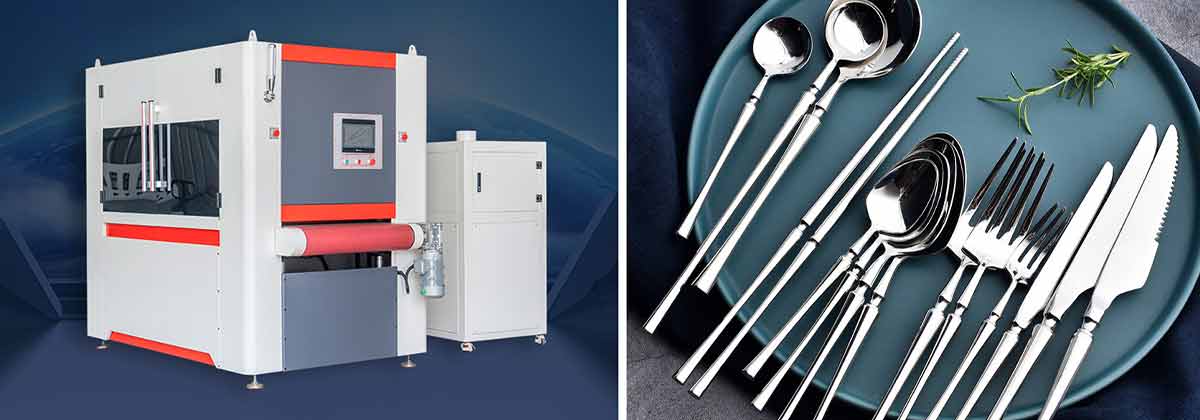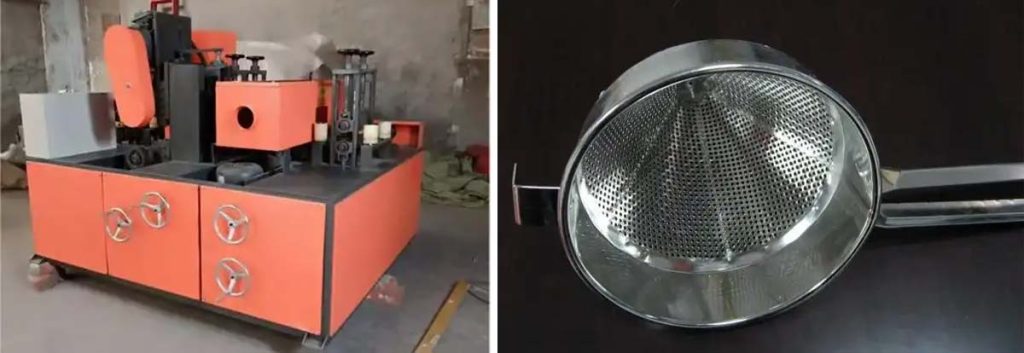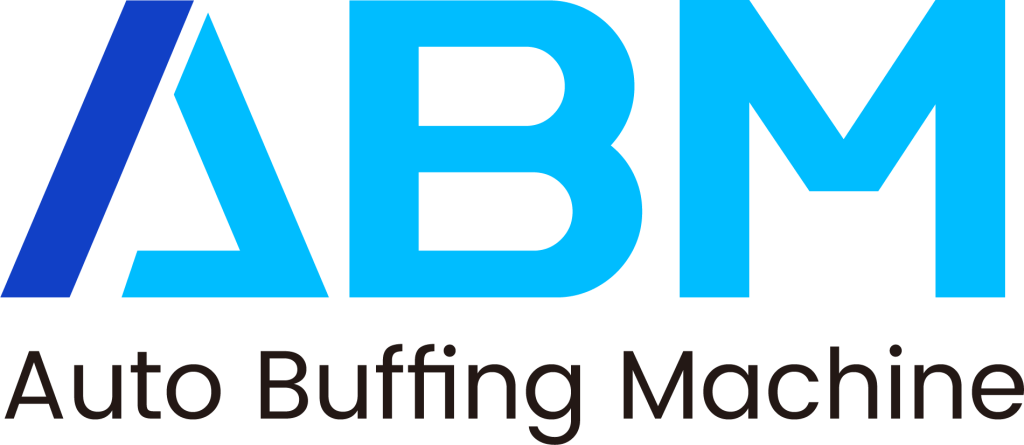

Recycled metals often face challenges like surface imperfections, which reduce their usability and value. Auto buffing machines address these issues by refining the metal’s surface and eliminating flaws. This process ensures that recycled materials meet higher quality standards, making them more suitable for industrial applications. By improving the appearance and functionality of recycled metals, these machines play a vital role in advancing sustainable recycling efforts. Their efficiency not only enhances the quality of materials but also supports eco-friendly practices in the industry.
Key Takeaways
- Auto buffing machines make recycled metals better by fixing flaws.
- They polish metals to last longer and stop rust or damage.
- These machines raise the value of recycled metals by improving looks.
- New eco-friendly features, like no-water cleaning, help the environment.
- Industries like car-making and electronics use these metals for products.
Challenges in Recycling Metals
Surface Imperfections and Their Impact
Surface imperfections present a significant challenge in recycling. These flaws, such as scratches, dents, or corrosion, reduce the usability of recycled metals. Imperfections often result from prolonged exposure to harsh environments or improper handling during collection and processing. These defects compromise the structural integrity of metals, making them less suitable for industrial applications. Additionally, contaminants like plastic or rubber can adhere to the surface, further complicating the recycling process.
The metal recycling industry faces several significant challenges that impact efficiency, profitability, and overall environmental benefits. These challenges include contamination of recyclable metals, fluctuating market prices, infrastructure limitations, quality control issues, evolving regulations, and the need for increased public awareness and participation.
Addressing surface imperfections is crucial for improving the quality of recycled metals and ensuring their competitiveness in the market.
Importance of Surface Quality in Recycling
Surface quality plays a pivotal role in recycling metals. High-quality surfaces ensure that recycled materials meet industry standards and can be reused effectively. Contaminants, such as non-metallic materials, often degrade the quality of recycled metals. This degradation limits their applications and reduces their market value.
- Contamination from non-metallic materials like plastic and rubber complicates the recycling process.
- Maintaining the quality of recycled metals is difficult due to potential degradation and improper recycling techniques.
- Evolving environmental regulations create compliance challenges for recyclers.
Improving surface quality not only enhances the durability of recycled metals but also increases their usability across various industries.
Limitations of Traditional Refining Methods
Traditional refining methods often fall short in addressing the challenges of modern recycling. These methods struggle to remove contaminants effectively, leading to lower-quality recycled metals. They also lack the precision required to restore surface quality.
- Embracing the full recovery cycle, including collection, treatment, and reuse, is essential for competitiveness.
- The recycling industry must improve waste management practices to handle more complex materials effectively.
- Efficient recycling plants are necessary to enhance overall processing capabilities.
Innovative solutions, such as auto buffing machines, are essential to overcome these limitations and improve the overall efficiency of recycling processes.
The Functionality of Auto Buffing Machines
Key Features and Technologies

Auto buffing machines are equipped with advanced features that enhance their performance in the recycling process. These machines use high-speed rotating wheels combined with metal polishing compounds to refine the surface of recycled metals. Their precision ensures that even stubborn contaminants are removed effectively, leaving a smooth and polished finish.
Modern auto buffing machines often include adjustable speed settings, allowing operators to tailor the process to different types of metals. Some models incorporate automated sensors that detect surface imperfections and adjust the buffing intensity accordingly. This technology improves efficiency and ensures consistent quality across batches of recycled materials. Additionally, the integration of durable materials in the construction of these machines enhances their longevity, making them a cost-effective solution for industrial recycling.
The Buffing Process in Recycling
The buffing process plays a critical role in improving the quality of recycled metals. It involves several key steps to ensure optimal results:
- Apply metal polishing compounds to the buffing wheel for even distribution.
- Maintain a consistent angle and apply light pressure during the process.
- Practice on scrap materials to master the technique.
- Buff in sections, following the grain of the metal to avoid scratches.
- Inspect the surface frequently to identify and address issues early.
- Use separate wheels for different metal polishing agents to prevent cross-contamination.
- Keep the workspace clean to avoid debris-induced scratches.
- Control heat buildup by allowing the metal to cool when necessary.
- Finish with a clean cloth to remove residual compounds.
- Apply protective sealants or waxes to preserve the polished surface.
This systematic approach ensures that contaminants are removed effectively, resulting in high-quality recycled metals ready for industrial use.
Eco-Friendly Innovations in Auto Buffing Machines
Eco-friendly innovations have transformed auto buffing machines into sustainable tools for recycling. Many machines now feature waterless wash solutions that emulsify dirt without wasting water. Biodegradable cleaning agents, made from naturally sourced ingredients, further reduce environmental impact. Steam cleaning technology has also gained popularity, using high-temperature steam to remove contaminants efficiently without relying on harsh chemicals.
These advancements not only improve the recycling process but also align with global efforts to reduce waste and promote sustainability. By adopting these technologies, industries can enhance their recycling efficiency while minimizing their ecological footprint.
Benefits of Auto Buffing Machines in Recycling
Enhanced Metal Purity and Quality
Auto buffing machines play a crucial role in improving the purity and quality of recycled materials. These machines effectively remove impurities and contaminants from metal surfaces, ensuring a cleaner and more refined output. By utilizing advanced technologies, such as automated sensors and high-speed rotating wheels, they eliminate even the smallest imperfections. The application of metal polishing compounds during the process further enhances the surface finish, making the metals suitable for high-standard industrial applications.
The use of scrap cleaning machines in conjunction with auto buffing machines ensures a thorough cleaning solution for recycled metals. This combination not only improves the recycling process but also guarantees that the final product meets stringent quality requirements. Industries benefit from these advancements by receiving materials that are free from impurities and ready for immediate use.
Improved Durability and Longevity
Recycled materials processed through auto buffing machines exhibit improved durability and longevity. The buffing process strengthens the metal by removing surface flaws that could weaken its structure over time. Polished surfaces resist corrosion and wear more effectively, extending the lifespan of the recycled metals.
The integration of metal polishing compounds during the buffing process creates a protective layer on the metal surface. This layer acts as a barrier against environmental factors, such as moisture and pollutants, which can degrade the material. Scrap cleaning machines further contribute by ensuring that contaminants are entirely removed before the buffing stage. This comprehensive approach enhances the overall durability of recycled materials, making them a reliable choice for various applications.
Increased Market Value of Recycled Metals
Auto buffing machines significantly increase the market value of recycled metals. High-quality, polished metals are more appealing to buyers and command higher prices in the market. The removal of impurities and the application of metal polishing compounds result in a product that meets or exceeds industry standards.
Industries that rely on recycled materials prefer metals processed with advanced cleaning solutions and buffing technologies. These processes ensure that the materials are free from contaminants and ready for immediate use. Scrap cleaning machines and auto buffing machines together create a seamless recycling process that enhances the overall value of the final product. This improvement not only benefits recyclers but also supports the broader goal of sustainable recycling practices.
Contribution to Sustainable Recycling Practices
Auto buffing machines contribute significantly to sustainable recycling practices by improving the efficiency and quality of the recycling process. These machines ensure that recycled metals meet high standards, reducing the need for virgin materials. This approach conserves natural resources and minimizes the environmental impact of metal production.
The use of auto buffing machines aligns with global efforts to promote sustainability. By refining the surfaces of recycled metals, these machines reduce waste and extend the lifecycle of materials. Industries benefit from this process by receiving high-quality metals that can be reused in various applications. This reduces the demand for new raw materials, which often require energy-intensive extraction methods.
Tip: Recycling metals with advanced technologies like auto buffing machines helps lower greenhouse gas emissions and supports a circular economy.
Auto buffing machines also play a role in reducing the amount of scrap that ends up in landfills. By removing contaminants and imperfections, these machines transform discarded materials into valuable resources. This not only decreases waste but also supports the recycling industry’s goal of achieving zero waste.
The integration of eco-friendly innovations in auto buffing machines further enhances their contribution to sustainability. Features like waterless cleaning and biodegradable agents reduce the environmental footprint of the recycling process. These advancements demonstrate how technology can support both industrial efficiency and environmental responsibility.
Real-World Applications of Auto Buffing Machines
Industries Leveraging Auto Buffing Machines
Auto buffing machines have become indispensable across various industries that rely on high-quality recycled metals. The automotive sector, for instance, uses these machines to refine recycled steel and aluminum for manufacturing car parts. Polished metals ensure durability and aesthetic appeal, which are critical for vehicle production. Similarly, the construction industry benefits from these machines by obtaining smooth and corrosion-resistant recycled metals for structural components.
Electronics manufacturers also leverage auto buffing machines to process recycled metals like copper and gold. These materials are essential for creating high-performance electronic components. Recycling facilities equipped with advanced buffing technologies can meet the stringent quality standards required by these industries. This ensures a steady supply of refined metals while reducing the demand for virgin resources.
Case Studies of Successful Recycling Practices
Several recycling facilities have demonstrated the transformative impact of auto buffing machines. One notable example involves a facility specializing in aluminum recycling. By integrating auto buffing machines into their process, the facility achieved a 30% increase in the quality of their recycled output. This improvement allowed them to secure contracts with major automotive manufacturers.
Another case study highlights a facility focused on electronic waste recycling. The use of auto buffing machines enabled the recovery of high-purity copper and gold from discarded devices. This not only boosted the facility’s profitability but also contributed to reducing electronic waste in landfills. These examples underscore the role of buffing machines in enhancing the efficiency and sustainability of recycling operations.
Future Trends in Metal Recycling Technology

Emerging trends in metal recycling technology are poised to influence the development of auto buffing machines. Digitalization and automation are streamlining recycling processes, enabling facilities to handle larger volumes with greater precision. Artificial Intelligence (AI) is being used to identify and sort metals more efficiently, reducing contamination risks.
| Emerging Trends in Metal Recovery and Recycling Service |
|---|
| Digitalization and automation |
| Use of Artificial Intelligence (AI) |
| Development of new recycling technologies |
New material compositions and recycling processes are also shaping the future. Early collaboration between product developers and recyclers can prevent design flaws that hinder recyclability. With adequate lead time, facilities can develop processes tailored to new products. These advancements will likely enhance the capabilities of auto buffing machines, ensuring they remain integral to modern recycling efforts.
Conclusion
Auto buffing machines have revolutionized the recycling industry by addressing surface imperfections and enhancing the quality of recycled metals. Their ability to improve metal purity and durability ensures that recycled materials meet industry standards. These machines play a vital role in construction, where high-quality metals are essential for structural integrity. By refining surfaces and removing contaminants, they increase the market value of recycled metals, making them a preferred choice for construction recycling and other industrial applications.
The adoption of auto buffing machines aligns with global sustainability goals. Their eco-friendly innovations reduce waste and conserve resources, supporting a circular economy. As industries prioritize green solutions, these machines will continue to drive advancements in recycling technology and practices.
